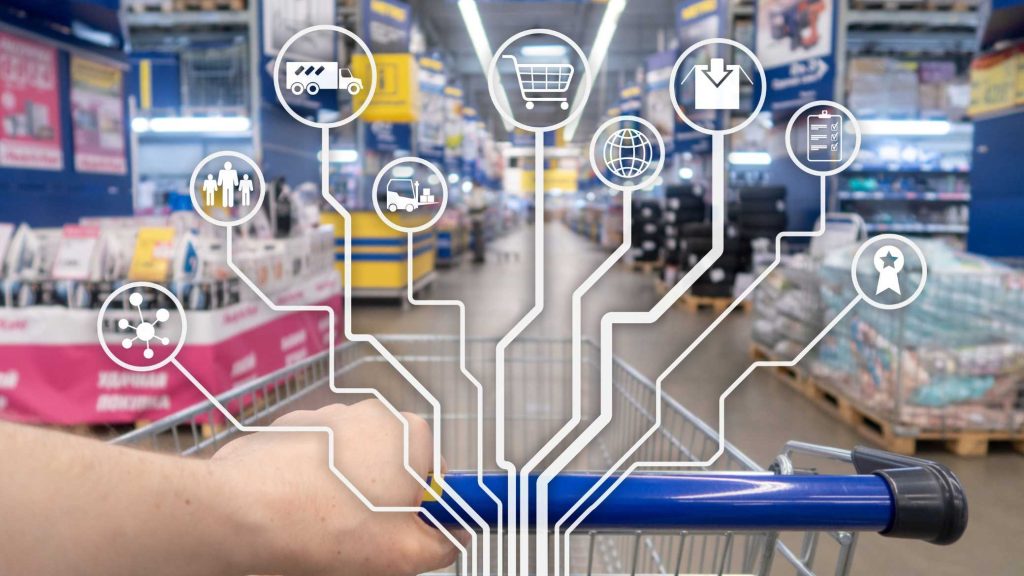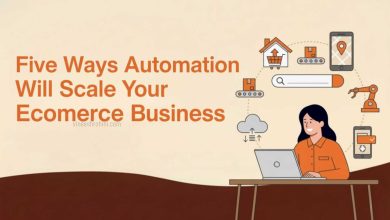What is Conversational Commerce ? : Comprehensive Guide 2025
What is Conversational Commerce : In the rapidly evolving digital landscape, Conversational Commerce has emerged as a transformative trend redefining how businesses engage with customers. As online shoppers increasingly demand personalized, real-time, and seamless experiences, brands are turning to conversational interfaces—such as chatbots, messaging apps, and voice assistants—to drive sales, support, and engagement. In 2025, Conversational Commerce is no longer a futuristic concept; it is a mainstream strategy that empowers brands to humanize digital interactions while simultaneously improving conversion rates and customer satisfaction.
Table of Contents
This detailed guide dives deep into the meaning, significance, benefits, tools, trends, and implementation strategies of conversational commerce. If you’re a business owner, marketer, or entrepreneur aiming to scale your digital sales and enhance customer experience, understanding this powerful tool is essential.
What is Conversational Commerce?

Conversational Commerce refers to the intersection of messaging apps and shopping, where brands and customers interact via chat or voice to discover products, resolve queries, and complete purchases. Coined by Uber’s Chris Messina in 2015, the concept has since evolved from basic customer support to a full-fledged commerce channel encompassing everything from product discovery and personalized recommendations to payment integration and post-sale support.
It involves using platforms such as:
- Live Chat (on websites or mobile apps)
- Chatbots and AI Assistants
- Messaging Apps (like WA, FB Messenger, Telegram)
- Voice Assistants (such as Amazon Alexa, G Assistant, Apple Siri)
- Social Media DMs (Insta, Twitter, Threads)
In essence, conversational commerce bridges the gap between the high-touch service of physical retail and the convenience of e-commerce.
Why Conversational Commerce Matters in 2025
The way consumers shop has dramatically changed in recent years. With over 5 billion people using messaging apps daily, customers expect immediate, real-time communication. As voice search, mobile shopping, and personalization become critical to online business, conversational interfaces have emerged as the fastest-growing way to enhance the buying journey.
Key Stats (2025 Projections):
- 75% of online shoppers prefer messaging with brands over traditional web or app navigation.
- Over 60% of e-commerce interactions now involve some form of AI-driven messaging.
- Businesses that leverage conversational commerce see a 20–30% increase in conversion rates and a 25% reduction in customer service costs.
Core Components of Conversational Commerce
1. Chatbots
Automated bots that interact with customers using pre-defined flows or AI-powered NLP (Natural Language Processing). Chatbots can handle product recommendations, FAQ responses, cart recovery, and customer feedback.
2. Live Chat Support
Combines human agents with automated bots for real-time issue resolution. Especially valuable in high-ticket or sensitive industries like finance, healthcare, and luxury products.
Also Read : How to Write a Content Brief
3. Voice Commerce
Users interact with brands through smart speakers or voice assistants (e.g., “Alexa, reorder my vitamins”). Growing fast among millennials and Gen Z.
4. Messaging Apps Integration
Using WA, Messenger, and Telegram to manage sales, support, and notifications. WA Business API, for instance, allows payment collection and order updates directly in chat.
5. Social Media DMs
Insta and FB DMs have become mini e-commerce channels. Brands use auto-reply bots, stories, and product tags to drive conversions.
Benefits of Conversational Commerce
1. Higher Engagement and Conversion Rates
Real-time interactions build trust and eliminate buyer hesitation. Instant answers mean fewer cart abandons.
2. 24/7 Customer Support
AI bots provide round-the-clock assistance, helping customers at any time, globally, and improving user satisfaction.
3. Personalized Shopping Experience
Bots and messaging apps collect and use data to recommend relevant products, discounts, and bundles—mimicking an in-store personal assistant.
4. Faster Buying Process
Customers can find, compare, and purchase within a single conversation—often without even visiting a website.
5. Cost Efficiency
Reduces dependency on large customer support teams, allowing businesses to serve more people with fewer resources.
6. Scalable Operations
Whether you’re dealing with 100 or 10,000 queries, automation allows businesses to scale customer interactions effortlessly.
How Conversational Commerce Works (Step-by-Step Flow)
- Customer Initiates Contact: Through a chat widget, WA, or voice command.
- Bot/Agent Responds: Provides assistance or answers basic queries.
- Personalization Engine Kicks In: Recommends products based on previous history or conversation.
- Purchase is Made in Chat: Integration with Stripe, Razorpay, Shopify, etc., allows transactions to be completed instantly.
- Post-Purchase Engagement: Order updates, feedback collection, and upselling happen seamlessly within the chat.
Tools and Platforms Powering Conversational Commerce in 2025
🛠️ Chatbot Builders
- ManyChat – For Messenger, W, and Insta automation.
- Tidio – AI chatbots and live chat integration for Shopify/WooCommerce.
- Chatfuel – Popular among non-tech users for FB and Telegram bots.
- Drift – B2B conversational marketing tool with robust sales features.
🔊 Voice Assistant Tools
- G Dialogflow – AI engine for building voice-based apps and bots.
- Amazon Lex – Powers Alexa and integrates with enterprise platforms.
- Apple SiriKit – For voice integrations within iOS-based shopping apps.
💬 Messaging APIs
- Twilio – For SMS, WA, and voice automation.
- WA Business API – Send order confirmations, shipping alerts, and payment links.
- FB Messenger Platform – Deeply integrated with Shopify and Insta Shops.
💻 E-commerce Platforms with Conversational Support
- Shopify Inbox
- Magento Chat Extensions
- BigCommerce with Live Chat AI
- WooCommerce + WP Live Chat Plugin
Use Cases of Conversational Commerce
1. Product Discovery
Example: A user messages a skincare brand asking for “anti-aging cream for oily skin.” The bot asks a few questions and recommends specific products.
2. Cart Recovery
Example: A user abandons their cart. The bot sends a message: “You left something in your cart—here’s 10% off to complete your purchase.”
3. Appointment Booking
Example: A hair salon allows users to book appointments via Insta DM chatbot.
4. Customer Support
Example: An electronics store offers order tracking, warranty info, and support through WA and Telegram bots.
5. Upselling and Cross-Selling
Example: “Customers who bought this also liked…” prompt within a chatbot conversation leading to higher order value.
How to Implement Conversational Commerce for Your Business

Step 1: Choose Your Platform
- Identify where your customers spend time—WA, Insta, or your website.
- Select a bot or chat solution compatible with that channel.
Step 2: Define Objectives
- Are you solving support queries?
- Driving sales?
- Booking services?
- Choose KPIs such as response time, conversion rate, or cart recovery.
Step 3: Build Your Chat Flow
- Use templates or custom-build flows with conditions, quick replies, product menus, etc.
- Include escalation paths to live agents.
Step 4: Integrate With E-commerce and CRM Tools
- Sync with Shopify, WooCommerce, or CRM tools like HubSpot or Salesforce for lead tracking.
Step 5: Test and Launch
- Run tests across devices and use A/B testing for welcome messages, CTAs, and product pitches.
Step 6: Optimize Over Time
- Use analytics to track response times, open rates, and conversions.
- Improve flows using customer feedback and behavior insights.
Conversational Commerce for Different Business Types
🛍️ E-commerce Stores
- Use bots to assist with size guides, payment issues, and restock alerts.
- Example: D2C brands on Insta automate order-taking via DM bots.
🧑⚕️ Service Providers
- Automate bookings, rescheduling, and customer follow-ups.
- Example: Clinics using WA chatbots for appointment reminders.
🧑💻 SaaS Companies
- Use live chat for onboarding, support, and upsell campaigns.
- Example: CRM tool offering chatbot-based product demos.
🏪 Brick & Mortar Stores
- Use voice bots or QR-based WA access to digitize in-store assistance.
Challenges in Conversational Commerce
1. Language Barriers
Multilingual bots require advanced NLP capabilities to respond accurately across regions.
2. Privacy and Security
Users share sensitive data; encryption and secure handling are critical.
3. Over-Automation
Too much reliance on bots without human fallback can lead to frustration.
4. Platform Dependency
Relying heavily on WA or Meta platforms makes businesses vulnerable to policy changes or outages.
5. Bot Fatigue
Repetitive or non-personalized messaging can annoy customers and reduce engagement.
Trends Shaping Conversational Commerce in 2025
1. AI-Powered Personalization
Using AI to tailor product suggestions based on behavior, preferences, and browsing history.
2. Voice Commerce Growth
Voice-based purchases are growing with smarter assistants and device integrations.
3. Conversational Payments
Seamless integration with UPI, Stripe, and crypto wallets via bots and DMs.
4. Hyper-Personal Chat Marketing
Segmenting users by past purchases, behavior, and preferences to send tailored messages.
5. Integration with AR/VR
Virtual assistants in metaverse stores offer guided product tours and checkout support.
Future of Conversational Commerce
In the next 3–5 years, conversational commerce is expected to evolve with:
- AI-driven emotional intelligence, detecting user tone and adjusting responses
- Visual product carousels within chat interfaces
- Conversational checkout, eliminating multi-step forms
- Full CRM integration, allowing one-view customer history across channels
- Voice + Visual Assistants, guiding users via both verbal and screen-based inputs
Businesses that adapt quickly will reap the rewards—higher customer loyalty, increased conversions, and reduced support costs.
What is Conversational Commerce ? – Conclusion

Conversational Commerce is no longer a buzzword—it’s a competitive necessity in 2025. Whether you’re running an e-commerce brand, SaaS platform, or local business, integrating conversational tools into your customer journey is vital. By leveraging AI, automation, and real-time messaging, businesses can create highly personalized, frictionless, and satisfying experiences that drive not just conversions but also long-term relationships.
Buy Now : Video Sharing Platform
From WA and Insta DMs to voice-based assistants and advanced chatbots, the possibilities are endless. The key is to start small, iterate fast, and focus relentlessly on customer value.
Disclaimer : This article is for educational purposes only. The implementation of conversational commerce strategies should comply with all applicable data protection, consumer rights, and platform policies.
Keywords : What is Conversational Commerce – What is Conversational Commerce 2025 – What is Conversational Commerce Guide , What is Conversational Commerce Tips , What is Conversational Commerce and its applications



